Overview
Ever wondered what became of the Three Little Pigs and the Big Bad Wolf? In this version of a fractured fairy-tale-turned-card game, players build the tallest houses as fast as they can, while the wolves come knocking to be let in. Finally, the tables have turned and the not-so-little piggies can get their revenge!
Set Up
The game is simple to set up like so:
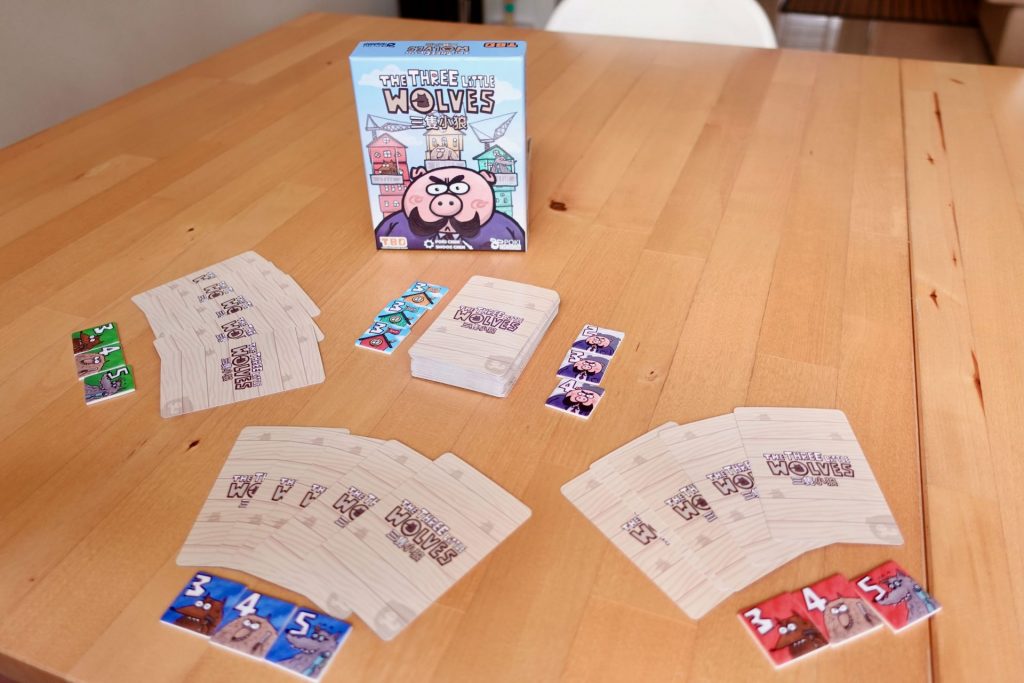
Buy The Three Little Wolves on Amazon
Floor cards which come in 4 different colors, red, green, yellow and white are shuffled and distributed 5 apiece for each player. The end-game trigger is set up by shuffling one random Big Bad Pig card with 5 other Floor cards that are placed at the bottom of the deck.
The remaining Big Bad Pig cards are shuffled into the draw pile. Players also receive the three Wolf Tokens of one color. These Wolf Token colors do not have any association with the colors of the apartments to be built.
Game Play
On a player’s turn, they play one card from their hand to build a floor in any of the three colors: red, yellow and green. The White colored floors are wild. These Floor cards must be built in chronological order but do not need to be in consecutive order. For example, over the course of three rounds, a player could start with the 3rd floor, then the 5th floor and then the 9th floor. They may not slide floors in between ones already built or stack in decreasing order except when building Basement Floors. Basement Floor cards may be placed in descending order only. That is, B1 and then B2 or B3. A player may not place a B3 card and then slide in a B1 card in a later round.
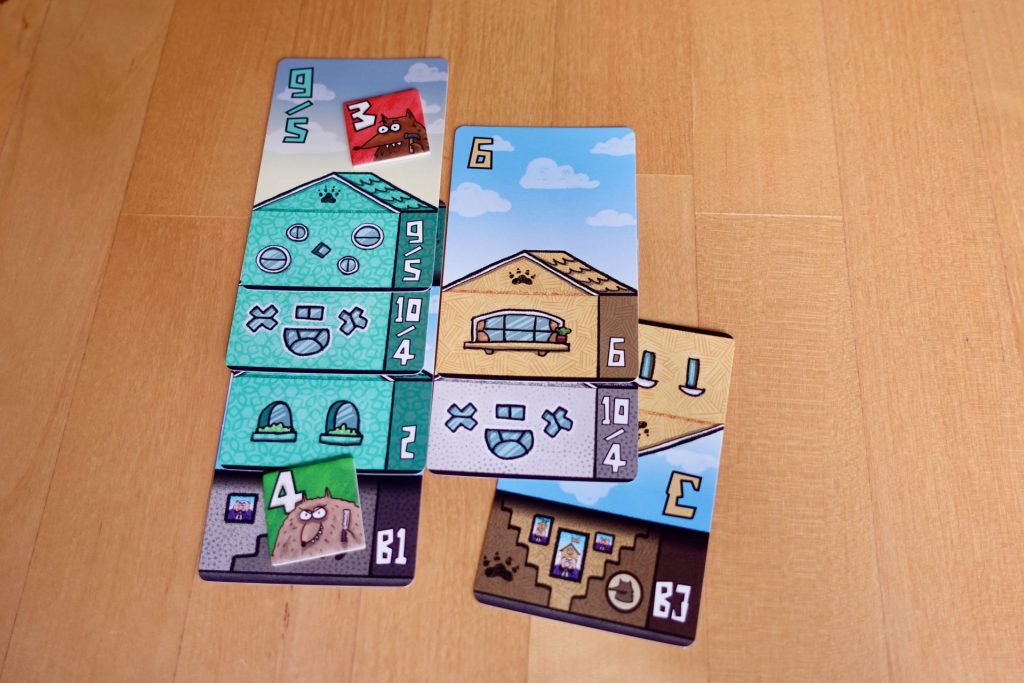
Alternatively, instead of placing Floor cards, players may choose to discard one card to place their Wolf token (used in ascending order) in another opponent’s house to score for bonus points later. However, a house may not have more than one Wolf tenant unless it has a Basement. Then, it may house two Wolves.
After placing their Floor cards in their playing area, players draw a card to bring their hand back to five cards. If they draw a Big Bad Pig card, they draw one more card and then resolve the Big Bad Pig card’s effect—either passing one card to the left player, to the right player or forcing everyone to place one of their Wolf tokens in an opponent’s house. The player with the tallest house at that point in the game wins the first Big Bad Pig token worth 2 points, and places it in his house. In the event the tallest house already has a Big Bad Pig token, it is placed on the next tallest house instead. These Big Bad Pig tokens award bonus points at the end of the game if the house remains standing. Play then passes to the player on the left.

The game ends when the third Big Bad Pig is drawn. The last Big Bad Pig token is placed onto the tallest house which has not yet had a Big Bad Pig token. The Big Bad Pig card’s special action is skipped and play continues for two more rounds before the game is scored.
At the end of the game, the shortest house in each of the three colors is demolished. Any tokens associated with demolished houses are flipped over to indicate the points to be deducted. The tallest house in each of the three colors receives the Tallest House tokens. These also indicate the bonus points awarded to that house. Any standing houses are worth 4 points each. Some special Roof cards have additional bonus points as well. Players’ Wolf tokens are added, as are any bonus points from the Big Bad Pig tokens.

Any houses that are demolished deduct 1 point and all tokens in the demolished house are flipped over to reveal their deductions. The winner is the player with the most points!
Buy The Three Little Wolves on Amazon
Final Thoughts
First, the artwork and theme is irresistibly cute and childlike. The use of bright and bold colors is very eye-catching. But, the pigs have grown up to be cunning landlords. The game is a little high level for kids actually reading the Three Little Pigs story. Still, that has not stopped my 6 year old asking to play the simple version which mostly focuses on building the tallest houses in the right order.
All that to say, the game is not complicated to play. Players are essentially laying cards in ascending order. The complexity comes through managing and balancing which houses to build, how high to build them and how best to take advantage of your opponents.
The game is light but feels quick and tight. Because there are a limited number of rounds to build the highest houses in three colors, it embodies the same urgency in the original Three Little Pigs Story, of building houses as quickly as possible before the Wolf comes. But in this game, you’re building before the Big Bad Pigs cards are drawn.

Early in the game, players are working in a solo endeavor to build their houses as quickly as possible. They are kept busy deciding how big a gap they should allow between Floor cards to best optimize for cards drawn later in the game. Midway through the game, the dynamics change and all players’ attention are invested in what opponents are doing. Everyone starts keeping an eye out to see which houses they are competing against for the Big Bad Pig tokens and the Tallest House token bonuses at game end.
Sometimes it may be that a certain color house might not be worth investing in to build, if an opponent has got a big lead. In that case, you might be better off discarding Floor cards of that color to get your Wolf tokens in the right houses instead. A 5-point Wolf token played gains more points than a mediocre house left standing at the end of the game which might be demolished.
Once the last Big Bad Pig card gets played, players spend the last two rounds scrambling to either dump their Wolf tokens for additional points or add special ability floor cards to their houses to stay in the game.
My only gripe is with players’ colored wolf tokens. They come in the same shade of color and style as the houses and makes it confusing for scoring since they make it hard to differentiate ownership.
Our three-player games averaged twenty minutes, which makes it a great family filler. The game has a nice balance of simple mechanics, complex decision making, and player engagement throughout the game and is packaged in an accessible theme that everyone knows.


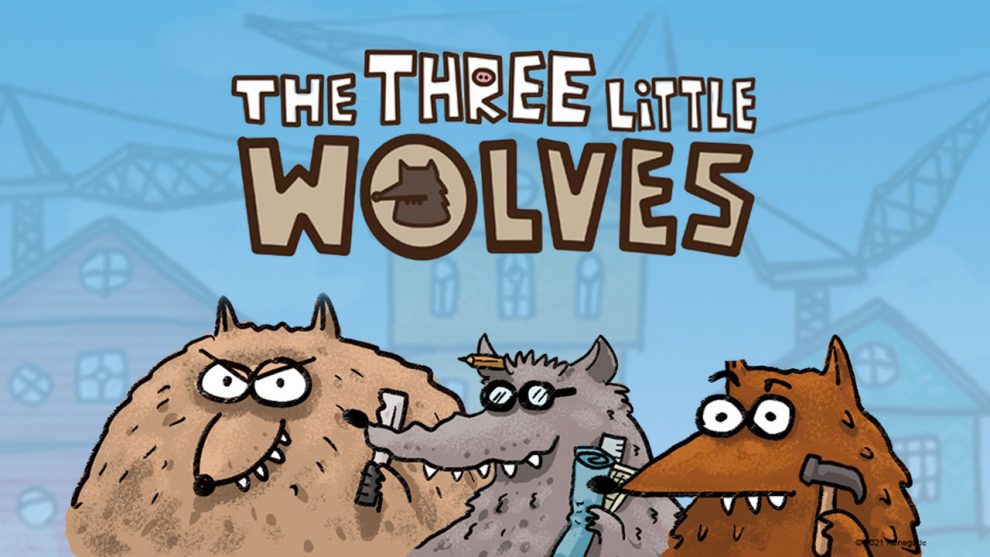

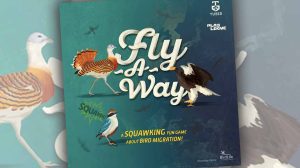
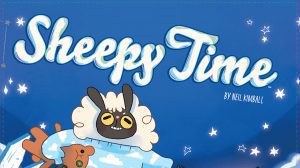






Add Comment